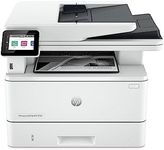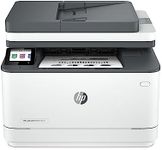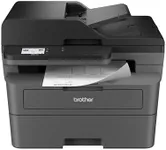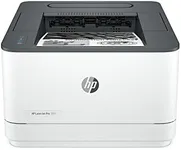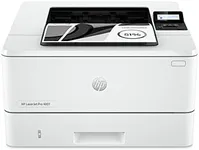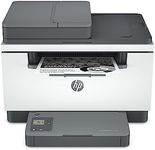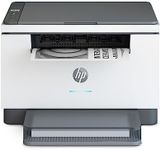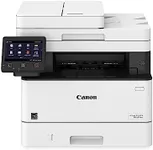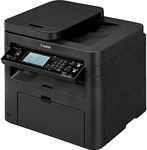Buying Guide for the Best Black And White All In One Printer
Choosing the right black-and-white all-in-one printer can be a bit overwhelming, but with the right approach, you can find a model that fits your needs perfectly. All-in-one printers combine printing, scanning, copying, and sometimes faxing capabilities into one device, making them a versatile choice for both home and office use. To make an informed decision, you should consider several key specifications that will impact the printer's performance and suitability for your specific requirements.Print SpeedPrint speed, measured in pages per minute (PPM), indicates how quickly a printer can produce documents. This spec is important because it affects how long you'll wait for your print jobs to complete. For light home use, a print speed of 20-30 PPM is usually sufficient. For a small office or more frequent printing needs, look for speeds of 30-40 PPM. High-volume environments may require speeds of 40 PPM or more. Consider your typical print volume and how often you need to print large documents to determine the right speed for you.
Print QualityPrint quality is measured in dots per inch (DPI) and determines the clarity and detail of the printed documents. Higher DPI values mean better print quality. For general text documents, 600 x 600 DPI is usually adequate. If you need to print detailed graphics or high-quality images, look for a printer with 1200 x 1200 DPI or higher. Think about the types of documents you print most often to decide the level of print quality you need.
Duty CycleThe duty cycle is the maximum number of pages a printer can handle in a month without experiencing issues. This spec is crucial for understanding the printer's durability and suitability for your printing volume. For home use, a duty cycle of up to 5,000 pages per month is typically enough. Small to medium-sized offices might need a duty cycle of 10,000 to 20,000 pages per month. High-volume environments should look for printers with a duty cycle of 20,000 pages or more. Assess your average monthly print volume to choose a printer with an appropriate duty cycle.
Connectivity OptionsConnectivity options determine how you can connect your printer to your devices. Common options include USB, Ethernet, Wi-Fi, and sometimes Bluetooth. USB connections are straightforward and reliable for single-device use. Ethernet is ideal for wired network connections in an office. Wi-Fi allows for wireless printing from multiple devices, which is convenient for both home and office settings. Bluetooth is useful for direct printing from mobile devices. Consider how you plan to connect your printer and choose a model that offers the necessary connectivity options.
Paper HandlingPaper handling refers to the types and sizes of paper a printer can accommodate, as well as its paper tray capacity. This spec is important for ensuring the printer meets your document needs. For standard home or office use, a printer that handles letter and legal-sized paper with a tray capacity of 250 sheets is usually sufficient. If you need to print on different media types, such as envelopes or labels, ensure the printer supports these formats. High-volume users might prefer a printer with multiple trays or a higher capacity to reduce the frequency of paper refills. Think about the types of documents you print and how often you print to determine the right paper handling capabilities.
Scanner ResolutionScanner resolution, measured in DPI, affects the clarity and detail of scanned documents. Higher resolution is important for scanning detailed images or documents that need to be enlarged. For general document scanning, 600 x 600 DPI is usually sufficient. If you need to scan high-quality images or detailed graphics, look for a scanner with 1200 x 1200 DPI or higher. Consider the types of documents you will be scanning most often to choose the appropriate scanner resolution.
Automatic Document Feeder (ADF)An Automatic Document Feeder (ADF) allows you to scan, copy, or fax multiple pages without manually feeding each one. This feature is important for efficiency, especially if you handle multi-page documents frequently. ADF capacities can range from 20 to 50 sheets or more. For occasional use, a lower capacity ADF may be sufficient. For frequent or high-volume scanning and copying, look for a higher capacity ADF to save time and effort. Consider how often you deal with multi-page documents to determine the right ADF capacity for your needs.
